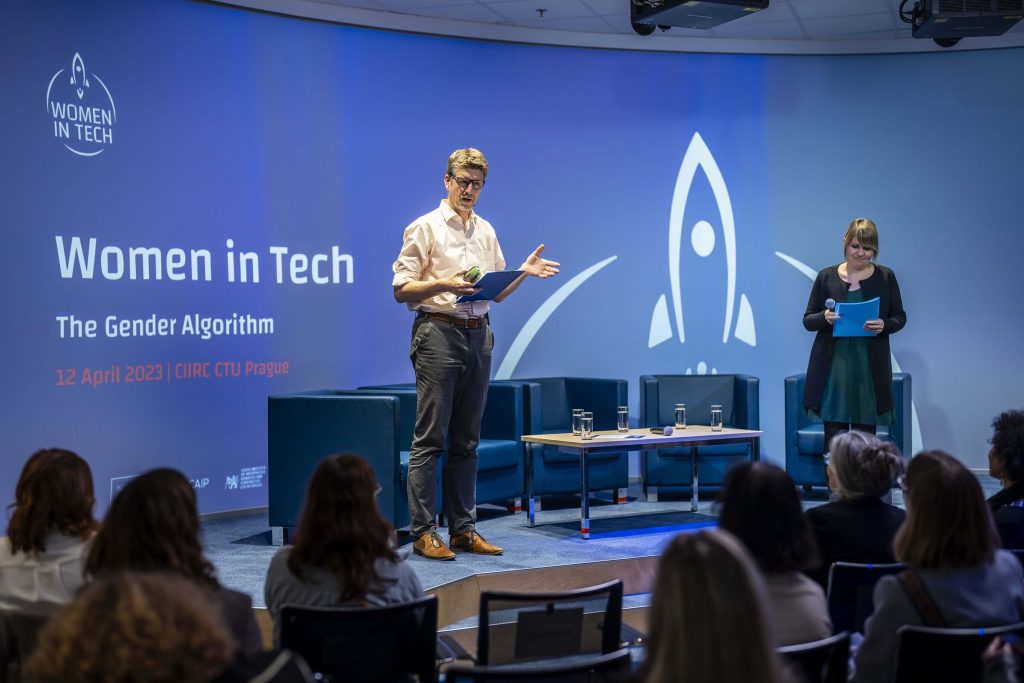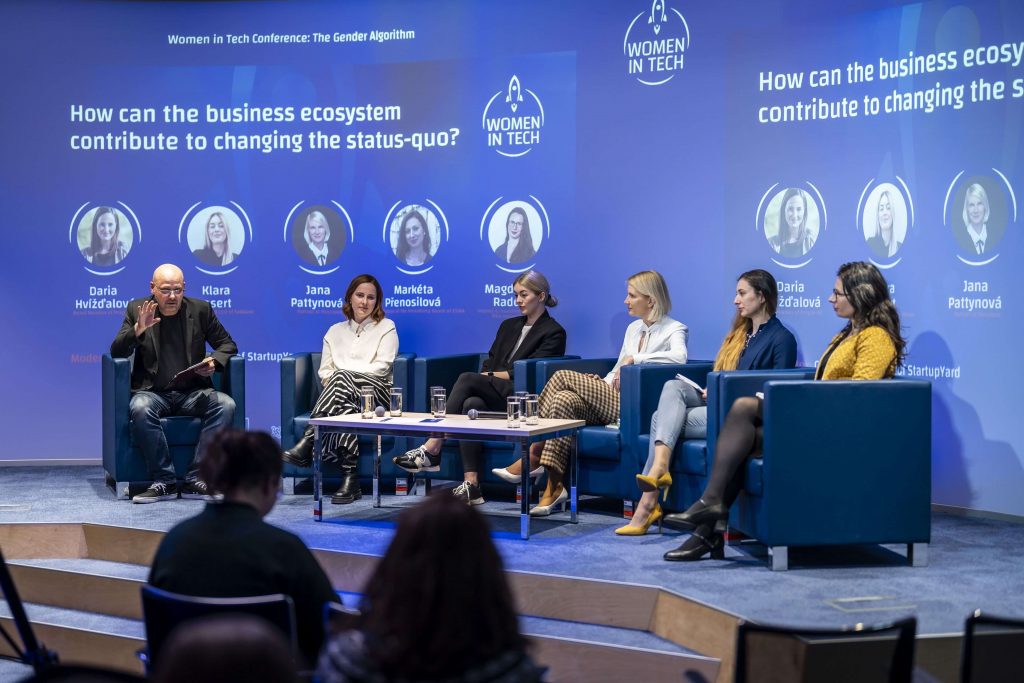On 12 April, CIIRC CTU welcomed guests of the event Women in Tech: the Gender Algorithm, which opened the topic of underrepresentation of women in the technology sector. Experts from academia, business and government discussed the causes and consequences of the lack of women in IT, shared their personal experiences and sought solutions to change the gender ratio in IT. Research and Innovation Centre for Advanced Industrial Production RICAIP co-organized the event together with French Embassy.

Digital technologies are one of the most powerful drivers of structural changes in the economy and society. The health crisis has reinforced their role and made it more obvious that Europe in general has a lot of catching up to do. However, the place of women in these key technologies for the future of our societies remains very low.
The gender gap in the job market is glaring, especially in the European Union. Worse, the proportion of women in digital jobs is not increasing and remains below 20% in Europe (17% in France; 10% in the Czech epublic). The ratio of investment in start-ups also remains largely at the expense of women start-up project leaders (90/10). However, everyone agrees that greater diversity is necessary, for social and economic reasons, but also to allow the sector to benefit from a richness of approach and creativity born from the diversity of profiles. Why are women so poorly represented in the sector? And what can be done to change the status-quo?
Fostering girls’ participation in the tech sector
The first international panel of the conference focused on education and discussed the long-standing prejudices and barriers in Western culture that prevent girls from considering STEM as a career path. Attracting more girls to science and IT is not a matter of one specific step and has no quick fix. However, it can be achieved by gradually breaking down stereotypes about the different abilities of men and women, which are often established at an early age. The panellists also agreed on the importance of showing female role models, without whom it is very difficult for women to identify with technical fields.

“Gender imbalance in IT is not the result of fate nor of a lack of interest in this topic on the part of girls, it is the result of social and cultural dynamics at work in the Western part of the world. It is also good to remember that in many regions, there are a lot of women in the tech sector.”
Veronique Debord-Lazaro, Scientific Attaché at the French Embassy in Prague.
Situation in the industrial sector
The second panel discussion focused on the issue of building a career in IT from the perspective of both large corporations and the world of start-ups. The most talked about issue was reconciling motherhood with career and creating a flexible working environment, which is often lacking not only in managerial positions. There was also a consensus that a change in the mindset of institutions and companies is essential for changing the status-quo in the IT sector, as they must see diversity as the only possible way to be successful and competitive in the long term.

A recording of the conference is available ▶️ here.
